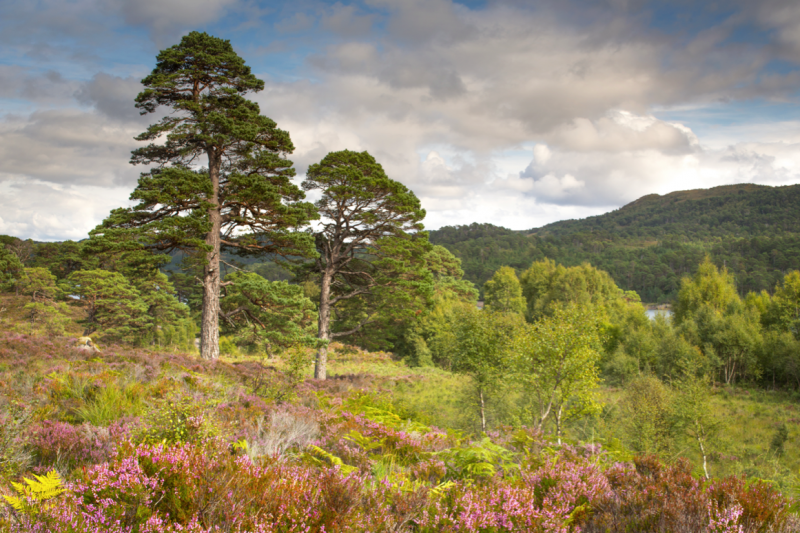An urbanite goes rewilding: What to expect from a Conservation Week
Last week, I took a break from from the never-ending whirr of modern life and replaced digital tweets with real ones: taking a trip up to Glen Moriston, west of Loch Ness, to participate in a Trees for Life Conservation Week.
 With a 250 year time-span, Trees for Life aims to restore the ancient Caledonian Forest, rewilding 1000 square miles and restoring vast tracts of the Scottish Highland’s to its former ecological glory.
With a 250 year time-span, Trees for Life aims to restore the ancient Caledonian Forest, rewilding 1000 square miles and restoring vast tracts of the Scottish Highland’s to its former ecological glory.
I came across this organization by reading George Monbiot on the subject of rewilding. It has fundamentally changed the way I see the Scottish and British countryside. Before, I had assumed that its cragged, rugged barreness was its natural state. Far from it. Left untouched, it would be as rich and ecologically vibrant as anything else around the world. And I say around the world deliberately: Monbiot argues that every continent on earth has had a mega-fauna. When Trafalgar Square was excavated, it was found to contain the bones of everything from lions to hippos.
But there is a fundamental problem in the Scottish Highlands (and I should point out that I am new to the politics of the countryside: anything I say should be taken with a pinch of salt). Deer numbers are kept artificially high by human-feeding through the winter, for the purposes of deer-hunting throughout the rest of the year. The problem is, deer feed on the seedling trees, meaning that, over time, forests cannot regenerate and grow. To compound the problem, moors are burned – literally burned! – to keep the area clear for hunting. And nor does it help that 50% of Scotland’s land is owned by 432 people, many of whom will receive subsidies from the EU, on the condition that the land is kept clear of ‘unwanted vegetation’.
Trees for Life do a variety of things to aid the regeneration of the forest – and not just planting trees. One of these is the ring-fencing of what they call ‘exclosures’ to prevent the access of deer, sometimes letting these areas re-generate naturally. A lot of non-native removal is necessary, too. Non-native trees cannot support the insects which have evolved over time to live in native trees, meaning that it cannot support the organisms higher up the eco-system. They also engage in deer-hunting, and (successfully) encourage neighbouring estates to control their numbers.
And already, Trees for Life have achieved a remarkable amount. Since it was set up in 1989, they have planted over 1.2 million trees, re-foresting around 4,000 hectares of land. The creation of exclosures has enabled the natural regeneration of over 150,000 Scots pine seedlings.
Since it was set up in 1989, they have planted over 1.2 million trees, re-foresting around 4,000 hectares of land. The creation of exclosures has enabled the natural regeneration of over 150,000 Scots pine seedlings.
Pine marten numbers are increasing; and wild boar have been successfully reintroduced: there are now believed to be around 50 boar running wild* in Glen Moriston. Parts of of it looks almost exotic and tropical in its lushness.
It was a real eye-opener for me in terms of the wildlife we came across. I saw toads, frogs, buzzards, boar, pine martens, big ants’ nests, tiny ants’ nests, and even (really!) lizards and slow worms. I don’t think I had seen any of those things before. It is beginning to team with life: there are also foxes and badgers. There is a growing movement pushing for the re-introduction of the lynx to the area: a prospect which makes my spine tingle.
I went up for three main reasons. The first was that the forest restoration project is inherently exhilarating. As the project develops it will become a majestic, ecological jewel in this country. The second reason was to re-connect with nature. Humanity-wide, through urbanisation, we are losing our connection with the natural world: something which I think contributes to our collective global shrug in the face of climate crisis (something I am as personally guilty of as anyone else). More than that, I think it contributes to our contemporary feelings of angst and alienation. I flinch slightly to say this, but it almost felt… good for the soul.
The third was that – through rewilding – I see an opportunity for humanity to redeem itself after centuries of hideous persecution of the planet. And boy do we need redeeming. From the destruction of the Amazon rainforest to the destruction of the Arctic; from the smog-filled cities of China to the forest-fires of Australia; from the Tarsands of Canada to the Gulf of Mexico; from the Niger Delta to the acidification of the oceans.
The planet has taken a hammering, and Trees for Life is a chance to experience the joyous process of repairing it.
First published 9th October, 2014
*A note from Mick Drury:
We have boar in a fenced area on our Dundreggan Estate, an experiment with bracken control to aid tree regeneration. We have not released boar; it’s generally believed that the feral boar in Glen Moriston have made their way over the hills from the south, escaping from captivity some years ago.

